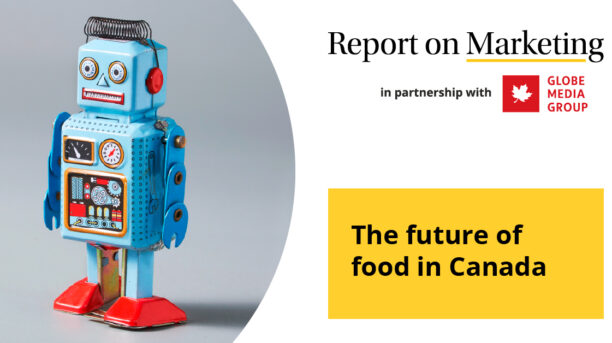By Jessica Borges, VP, Business Lead, Koo Multicultural
Summer brings a buzz of excitement for new beginnings, as immigrants arrive in the country to set up their new homes, find fulfilling jobs, or pursue higher education, many with the goal of permanent residency and, eventually, Canadian citizenship. The buzz is even bigger this year, as pandemic restrictions are being lifted and the Canadian government rushes to welcome 432,000 new permanent residents in 2022, as promised in Canada’s Immigration Levels Plan 2022–2024. With a target of 447,055 for 2023 and more than 451,000 for 2024, it could well mean 1.5 million new immigrants calling Canada home in the next three years.
The excitement of coming to Canada and positive feelings about the Great White North have only grown since the pandemic. Take international students, for example—close to 80% said that “safety and stability” were the biggest draw, with 70% citing Canada’s educational reputation, according to The Canadian Bureau for International Education’s (CBIE) 2021 International Student Survey, which reached out to 41,000 international students across 67 Canadian educational institutions.

Canada scores high in global surveys on safety, progress, and quality of life for people from around the world wanting the Canadian dream for themselves and their families. In the 2021 Social Progress Index and the Global Peace Index 2021, Canada ranked among the top 10 countries.
For new immigrants, moving to a new home and settling into a new country means flexing their purchasing power. They not only want to recreate the luxuries they enjoyed in their home countries, but also enhance their lifestyle. They have big dreams for themselves and even bigger ones for their children, and they’re willing to make sacrifices to achieve them. Research shows that their families tend to be younger, larger and more multi-generational than average. Missing the home and community they left behind means recreating festivals and celebrations, considering friends like family, learning new skills, and maintaining close ties with the people back home, even as they embrace all that Canada has to offer.

These immigrants represent a huge profit opportunity for brands that want to grow their consumer base in the short term. And they hold even greater potential for brands that want to connect, create bonds, and build a long-term relationship with new immigrants and the generations to come.
Brands can benefit by following a series of steps that get right to the heart of inclusion with new immigrants.
- A warm first welcome is always remembered.
- Be there to celebrate—at festivals, but also during important life moments, all year round.Kia launched its Carnival by celebrating a milestone Canadian moment—a multicultural, multigenerational family’s first camping trip. Unfamiliar with sleeping outdoors in tents, the family gravitates to the comfort of their minivan at night. The online video produced by Stradigi Marketing used this simple insight to resonate with consumers and make them smile.
- Understand their worries, their insecurities, their dreams. Be there with solutions that meet their needs and bring them value.In these times of vulnerability and change, Pfaff Harley-Davidson, working with the agency Zulu Alpha Kilo, displayed corporate inclusiveness by reaching out to underrepresented riders from the Sikh community. Inspired by Sikh warriors who wove chainmail into their turbans, their prototype product Tough Turban (with 3D-printed carbon fibre and impact-hardening foam) merges modern engineering with ancient tradition. What a powerful way to embrace heritage, identity, freedom of expression, and a sense of pride—by offering riding safety that also protects who you are.
- Your employees should represent your customers. Make sure you have advisors on your team with lived experiences and rich insights into the new immigrant journey.
- Be authentic—show respect and genuine care and encourage them to speak in their language and be their true selves.Multicultural audiences are strongly connected to their culture, traditions and language, even as they settle in Canada, and it’s very important for them to pass on this connection to the next generation. Created by Cossette, Google’s Pixel 6 spot, featuring the Live Translate function, brought together Chinese-Canadian Simu Liu and his parents in Canada’s first national campaign shot entirely in Mandarin. Moments like when the Marvel superhero’s parents call him by his nickname, Mama, and tell him to sit straight, brought authenticity and a personal connection that resonated with the audience.
- Be prepared to listen and keep learning—a new first-generation immigrant isn’t the same as a second-generation Canadian. A newcomer changes as they move forward in the settlement journey.
- Embrace the diversity within diversity. There are cultural differences, food preferences, beliefs, and differing ways of life, even among people from the same country. It’s easy to make the mistake of stereotyping them.
Diverse, vibrant, strong— the multicultural consumer is the fastest-growing customer base in Canada. Reach out with inclusivity to build lasting bonds and brand love. Celebrate their love… both for where they came from and for Canada, their new home. After all, their success is your success.
Cossette is a member of the Institute of Canadian Agencies. Report on Marketing is where leading Canadian agencies showcase their insights, cutting-edge research and client successes. The Report on Marketing provides a valuable source of thought leadership for Canadian marketers to draw inspiration from. Find more articles like this at the Report on Marketing.




